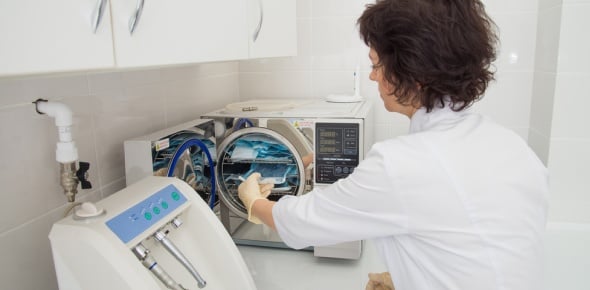Physical examinations of Navy and Marine Corps personnel, whether...
In which of the following circumstance should the health record be...
The health record of a military member may be used for which of the...
What is the purpose of a Report of Discrepancy, SF 364?
When a HREC is opened on a service member, the member should be...
A health record is only opened in which of the following cases?
Which of the following characteristics could designate an item as...
What information should be included on the NAVMED 6150/20 of a...
The health jackets of flag or general officers should be annotated to...
The shipboard medical OPTAR may be used to purchase all of the...
On which of the following documents would a notation be made...
Under which of the following circumstances may an individual’s...
All of the following are functions of a medical board EXCEPT
Alcohol should be stowed in a locked container in the paint and...
Results of radiation monitoring.
Under which of the following circumstances would a member’s health...
Family member screening is required even if a servicemember is...
When a member is hospitalized in a foreign nation and the ship departs...
EKGs are performed routinely as part of a member’s physical...
Although considered privileged, release of information in the health...
A record of prophylactic immunizations and sensitivity tests.
The preferred method for testing color vision is the
Custody of health records is generally vested in the medical...
Of the following, which is NOT considered a major category of the...
May be used for an active duty patient who is admitted to the hospital...
At the end of the second quarter, what is done with the funds that...
A Sailor reports for her periodic physical examination and states that...
Which of the following documents should NEVER be filed in an...
Who is responsible for verifying the content of a medical board?
A well-known and preeminent research group requests medical...
What is the name of the standard computer supply management system...
The first four digits of a National Stock Number are known as the
How many digits are in a National Stock Number?
Who assigns the Urgency of Need Designator (UND) on a requisition?
What entity is responsible for setting the physical standards for...
One method for testing near visual acuity is the
Medical journals and books may be ordered on which of the following...
In what document would you find the contents of each contingency block...
What report is used when a member is expected to return to full duty...
What is the primary purpose of an inventory?
All of the following locations aboard ship are appropriate stowage...
What is the maximum length of time an individual may be held on...
How often must inventory of controlled substances be conducted?
Secondary medical records, which are held separately from primary...
What is the preferred form on which to record admission to the...
Which of the following steps is appropriate when a servicemember is...
A copy of the HREC of a member separated for disability should be...
Whenever possible and where space permits, aisles in stowage areas...
In which of the following would you find handling or storage codes, a...
A command endorsement is required on a formal medical board.
The quantity of an item required to support operations between the...
Which of the following types of appropriations is not normally used by...
The minimum amount of an item of material required to support...
At a minimum, how often should all AMALs be reviewed?
Sick call visits for poison ivy.
Differences between on-hand quantity, location of stock, or other...
















